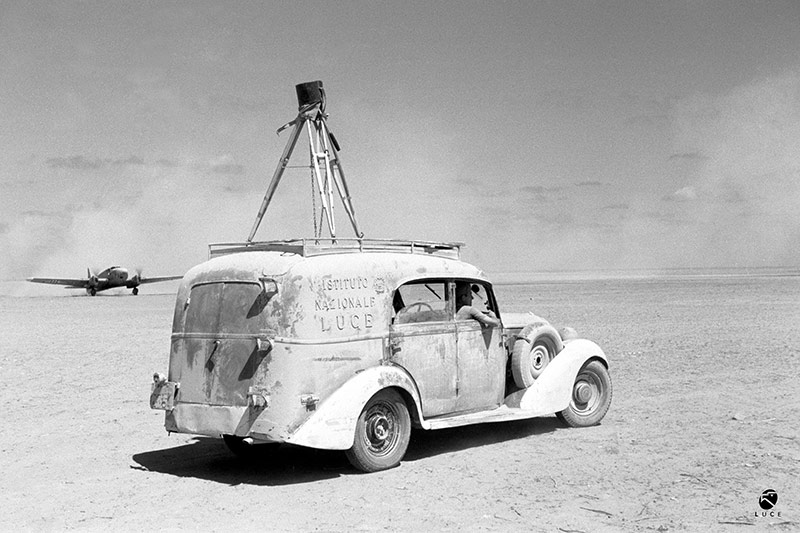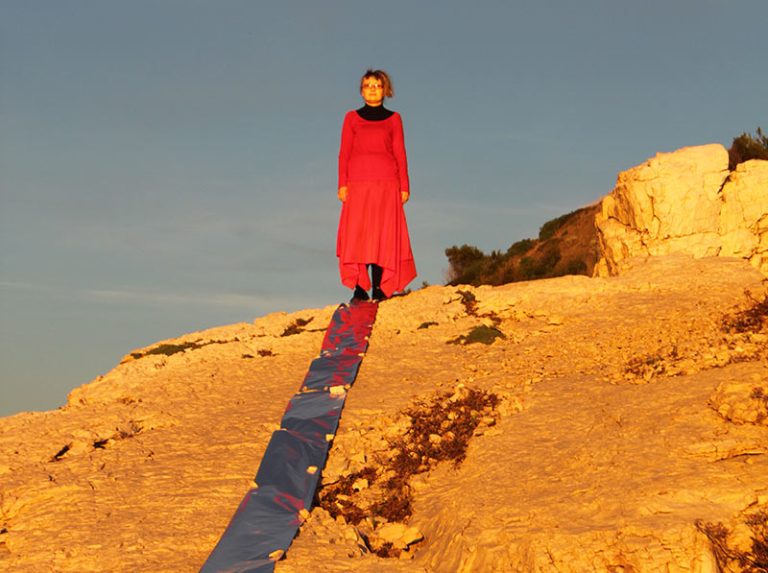Rome (Italy). Luce: few Italians are able to break down this acronym, but everyone knows this public institution which has preserved and enhanced the country's audiovisual memory for a century. It is the oldest in the world dedicated to the broadcasting of films for educational and informative purposes, hence its name: the Educational Cinematographic Union. Founded in 1924, at the dawn of the two decades of fascist dictatorship under which Italy lived, this organization had become a particularly effective propaganda tool for the regime of Benito Mussolini.
However, it was a modest limited company which was created at the very beginning of 1924 under the name Sindacato Istruzione Cinematografica (SIC). Its goal is to develop the use of cinema as a teaching aid in schools. At the origin of the project, a lawyer and a journalist specializing in the seventh art – who was at the origin of the birth of the Venice Festival in the 1930s –, Luciano De Feo (1894-1974). He will be its first secretary general. But his company does not have the funds necessary to develop, especially since the public authorities neglect issues related to education. To avoid bankruptcy, Luciano De Feo convinces the Duce's close collaborators of the usefulness of cinema in the latter's project to create a “new fascist man”. Cinematography, a recent invention at the time, was becoming democratized and constituted an ideal channel for reaching the masses.
Mandatory film screenings in the service of power
Benito Mussolini, a former journalist, immediately understood the essential role that this company could play. The dictator changed his name to “Luce” in July 1924 and the following year transformed it into a National Institute serving his propaganda with the mission of producing short films and newsreels in order to guarantee his control over the information. On April 3, 1926, a decree-law made the broadcast of these films compulsory in all theaters in Italy: “Cinema theater operators have the obligation to include, in the program of shows, the screening of films aimed at civic education, national propaganda and culture,” (article 1).
The development of the Luce Institute was then dizzying. In 1927, the abolition of independent filmed newspapers was ratified, consecrating the omnipresence of a “Cinegiornale Luce”, ancestor of television news, screened before all cinema screenings. It exalts the great achievements of the regime and its dictator, and echoes international events. “In 1928, 201 “Cinegornali” were made, almost one per dayrecalls Enrico Bufalini, director of the Archivio Storico Luce since 2012. 1928 was also the year of new growth for the Luce Institute, which won the European call for tenders to film the Amsterdam Olympic Games. In 1938, it already had 800 employees in a large building near Cinecittà. »
Benito Mussolini participated in the threshing with the peasants of Agro Pontino in 1934.
© Archivio Luce
The slogan “The cinematography is the strongest weapon” (Cinema is the most powerful weapon) was proclaimed on the banners displayed at the inauguration of the studios the previous year before being inscribed on the pediment of this new institution. Like the one that preceded it and with which it is now closely linked, it aims to educate the masses by reinforcing propaganda on Roman roots, Italianness, traditional values, the great works which are multiplying throughout the Peninsula, colonialism (at the time of the invasion of Ethiopia), militarism (at the time of the Spanish Civil War) and even anti-communism. All against a backdrop of a cult of personality with the main hero of the films produced: Benito Mussolini.
Digitized archives accessible to the public
The Luce Institute survived the fall of the dictatorship of which it was the voice for almost twenty years. After the Second World War, other content enriched its catalog and archives, notably documentaries, which tell the story of Italian society and its developments until the advent of television. The Luce Institute therefore serves as the country's historical memory, preserving more than 77,000 films and more than 5 million photographs from the dawn of the 20th century to the present day. “It is not only a mine that contains countless treasures, some of which have not yet been viewed, but, as in coral reefs, we can always add new elements, explains Chiara Sbarigia, president of Cinecittà since 2021 in charge of the Luce archives. We have thus launched collaborations with other historic centers, museums, universities…” In 2013, the Luce Institute joined UNESCO's “Memory of the World” program aimed at raising awareness among the international community of the richness of documentary heritage, the need to ensure its conservation and the efforts to make it accessible to as many people as possible. large number.
As was the case a hundred years ago when the Luce Institute was founded, Italy was at the forefront with part of its funds being put online in 2001 when the Internet was only its beginnings. In 2012, more than 30,000 videos were already available on the YouTube network. At the same time, a vast film restoration program was launched to ensure their longevity through digitization (read opposite). “The Luce Archives are the visual biography of our country, a unique tool for all those who wish to understand the past and orient themselves in the present, believes Chiara Sbarigia, president of Cinecittà. With the centenary celebrations of the Luce Institute, we want to contribute to the dissemination of its extraordinary films and photographs, highlighting its vitality as a driving force, still today, of art and culture. »
Restoration and digitization of audiovisual archives
Conservation. Since 2010, the Luce Institute has launched a vast restoration program of its archives, film reels and photographs, to speed up the digitization process. Until the 1950s, films were produced on cellulose nitrate-based film which makes them highly flammable. To improve security conditions but also save space, the image and sound are scanned using equipment specially designed to meet the requirements of archivists. Currently 30% of the Luce Institute's material has been digitized. Thanks to funds from the European recovery plan, the objective is to reach 70% by 2026. Three copies are made to guarantee the security of conservation of this audiovisual heritage. The coils are currently preserved in reinforced concrete structures and are the subject of cataloging and restoration work. The Luce Institute teams also colorize films or historical archives. This is particularly the case for the declaration of war by Fascist Italy against France and the United Kingdom on June 10, 1940. Within the Teatro 22 of Cinecittà, the use of artificial intelligence makes it possible both to reconstitute missing parts of films or preserved archives, but also to insert archives into new productions aiming to make them more accessible.







